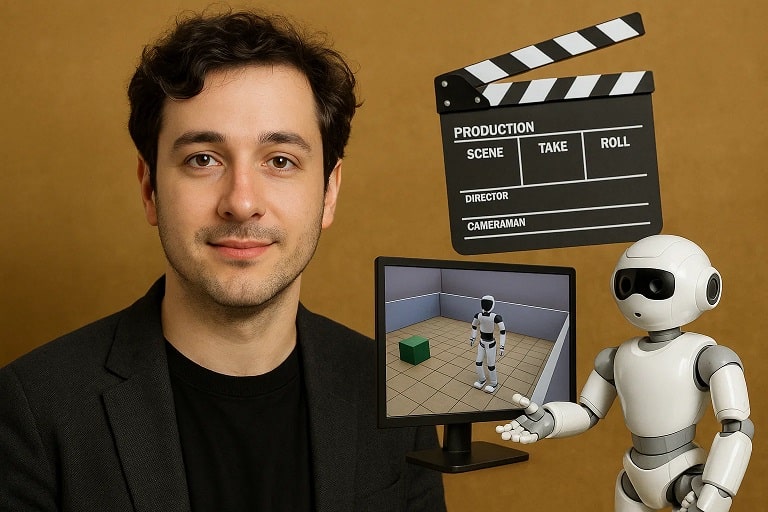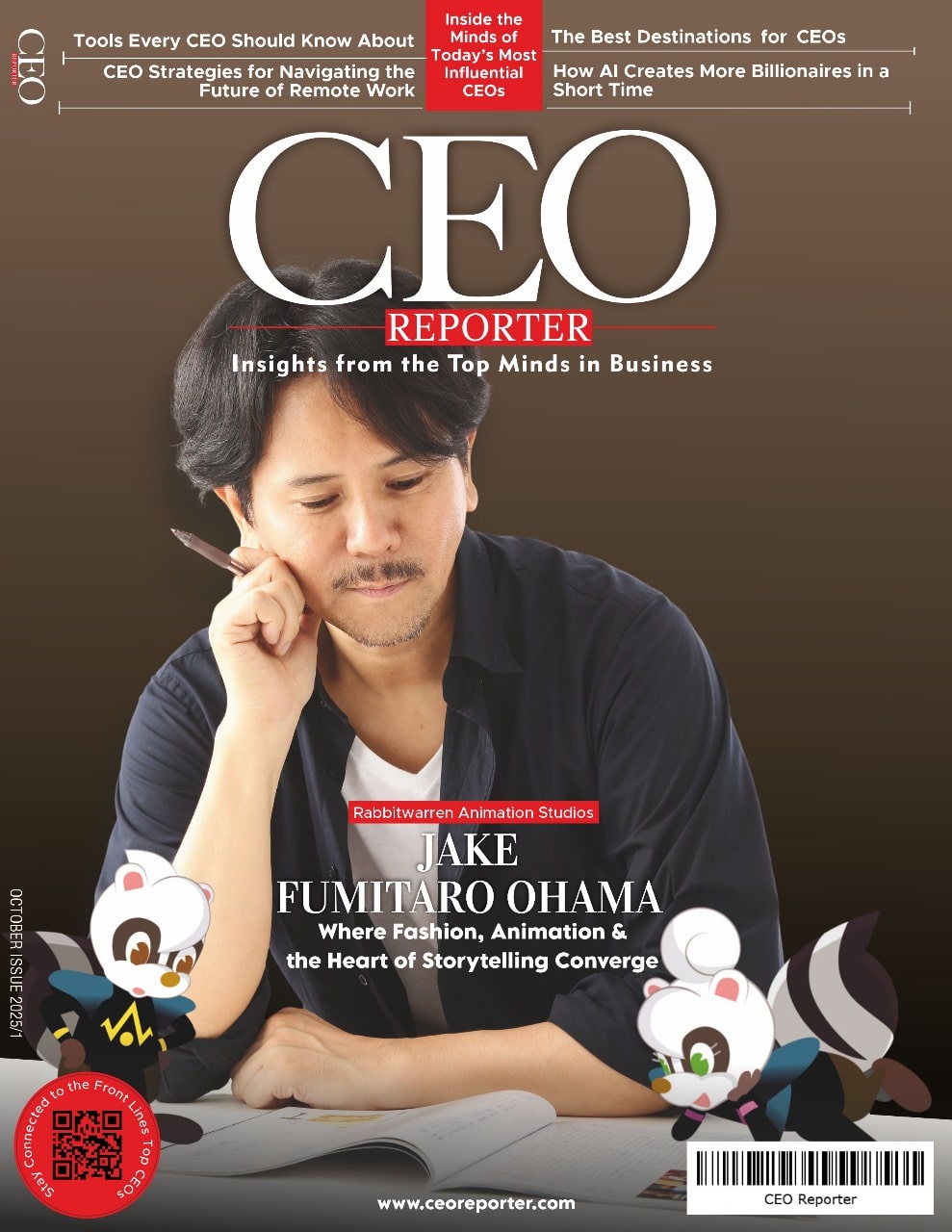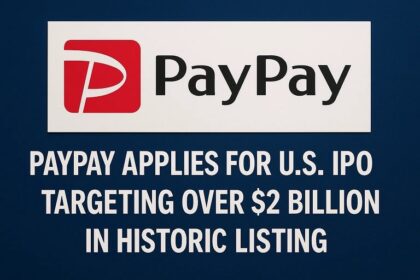Runway AI Expands from Entertainment to Robotics Training: A Strategic Pivot
On September 1-2, 2025, Runway AI, a New York-based company renowned for its generative AI video and photo tools, announced a significant expansion into robotics and autonomous vehicle training, leveraging its advanced world models to create scalable, cost-effective simulations. Initially focused on entertainment since its founding in 2018, Runway’s pivot was spurred by unsolicited interest from robotics and self-driving car companies, drawn to its Gen-4 (March 2025) and Runway Aleph (July 2025) models for their ability to simulate realistic environments. Valued at $3 billion with over $500 million raised from investors like Nvidia, Google, and General Atlantic, Runway is forming a dedicated robotics team to tap into a projected $50 billion robotics simulation market by 2030. This article explores the drivers behind this shift, historical context, future projections, and impacts, with a focus on potential relevance to India’s robotics and tech ecosystem, including Tamil Nadu’s role.
Why This Expansion Matters
Runway’s move into robotics training addresses the high costs and scalability issues of real-world robot testing, offering simulations that replicate complex scenarios with precise control over variables. This could accelerate the development of autonomous systems, from delivery robots to self-driving cars, impacting industries like logistics and manufacturing. In India, where the robotics market is projected to reach $2 billion by 2028, Runway’s technology could support local startups and Tamil Nadu’s tech hubs in Chennai and Coimbatore, fostering innovation in AI-driven automation.
Latest Developments Driving the Pivot
Runway’s expansion into robotics, announced in early September 2025, reflects a strategic response to market demand and technological versatility. Key developments include:
- Unexpected Demand: Robotics and autonomous vehicle companies approached Runway after its Gen-4 model (March 2025) demonstrated hyper-realistic simulations, capable of mimicking real-world physics like fluid dynamics and object interactions. Anastasis Germanidis, Runway’s co-founder and CTO, noted, “We think that this ability to simulate the world is broadly useful beyond entertainment,” highlighting cost-effective training for robotic policies.
- Technology Adaptation: Runway is fine-tuning existing models (e.g., Gen-4, Runway Aleph) for robotics, avoiding the need for new systems. These models generate 30-second video clips with consistent physics, enabling engineers to test scenarios like a car navigating a turn while keeping other variables constant.
- Dedicated Robotics Team: Runway is building a specialized team to cater to robotics clients, supported by its $308 million Series D funding (April 2025) from General Atlantic, Nvidia, and others. This follows a $536.5 million total raise, valuing the company at $3 billion.
- Market Opportunity: The global autonomous vehicle simulation market is valued at $1.4 billion in 2025, projected to reach $7.3 billion by 2034 (20.4% CAGR), with the broader robotics simulation market potentially hitting $50 billion by 2030. Runway’s pivot targets this high-growth sector.
- Competitive Landscape: Nvidia’s Cosmos and Luma AI’s 3D models are also entering robotics simulation, creating competition. However, Runway’s expertise in video synthesis offers a unique edge in creating photorealistic environments.
India and Tamil Nadu’s Context
India’s robotics ecosystem, centered in tech hubs like Bengaluru and Chennai, is growing, with startups like Addverb Technologies and GreyOrange leveraging AI for warehouse automation. Tamil Nadu’s Chennai, hosting IT and manufacturing clusters, could benefit from Runway’s simulations for training robots in automotive and logistics sectors. The state’s TNeGA initiatives and startup ecosystem align with IMC 2025’s rural tech focus, potentially integrating Runway’s tools for smart agriculture or logistics in rural areas.
Historical Context of Runway’s Evolution
Runway, founded in 2018 by Cristóbal Valenzuela, Alejandro Matamala, and Anastasis Germanidis, initially focused on AI for creative industries, particularly filmmaking and video editing:
- 2018-2020: Runway launched as a platform for AI-driven video editing, raising $2 million to deploy machine learning in multimedia. Its tools were used in films like Everything Everywhere All at Once.
- 2021-2023: The company released Stable Diffusion (2022) with Ludwig Maximilian University, followed by Gen-1 and Gen-2 (2023) for video-to-video and text-to-video generation. It raised $35 million (Series B, 2021), $50 million (Series C, 2022), and $141 million (Series C extension, 2023).
- 2024-2025: Runway launched Gen-3 Alpha (2024), Gen-4 (March 2025), and Runway Aleph (July 2025), enhancing video fidelity and physics simulation. Partnerships with Lionsgate and Musixmatch expanded its entertainment reach, while robotics interest emerged organically.
- 2025: The robotics pivot, driven by inbound interest, marks a departure from Runway’s original entertainment focus, reflecting its adaptability to new markets.
This trajectory underscores Runway’s shift from niche creative tools to a broader AI simulation platform.
Future Scopes and Projections
Runway’s robotics expansion targets a $50 billion market by 2030, with partnerships expected within 12-18 months. Its models could train robots for urban navigation or warehouse automation, reducing training costs by up to 50%.
Long-Term Strategic Outlook
By 2035, Runway aims to:
- Scale Simulations: Enhance world models to simulate complex edge cases, like crash scenarios for self-driving cars, improving safety and deployment speed.
- Expand Partnerships: Collaborate with Indian firms like Addverb or global players like Waymo, leveraging API access and bespoke integrations.
- Diversify Revenue: Shift from $90 million (mid-2025) in media revenue to a 50-50 split with robotics by 2030.
- Support India’s Ecosystem: Enable Tamil Nadu’s startups to adopt simulations for smart agriculture or logistics, aligning with IMC 2025’s rural tech goals.
Potential Challenges
- Accuracy Risks: AI “hallucinations” in simulations could lead to robotic failures, requiring rigorous validation.
- Competition: Nvidia, Luma AI, and others like Ansys and Siemens challenge Runway’s market share.
- Legal Issues: A lawsuit against Runway for using copyrighted data (e.g., YouTube videos) could escalate, impacting robotics applications.
- India-Specific Barriers: High infrastructure costs and low rural connectivity (35% internet penetration) may limit adoption in Tamil Nadu’s rural areas.
Impacts on Stakeholders and India’s Ecosystem
Runway’s pivot could reshape robotics development globally and in India, particularly in tech hubs like Tamil Nadu.
Sector-Wise Impacts
Robotics and Autonomous Vehicles
- Impact: Runway’s simulations reduce training costs and time, enabling safer robots for logistics and transport. Tamil Nadu’s automotive sector (e.g., TVS Motor) could adopt these for factory automation.
- Economic Contribution: The global robotics market could add $26 trillion by 2025, with India contributing $2 billion, including ₹500 crore from Tamil Nadu.
- Business Opportunities: Chennai startups may partner with Runway for warehouse robot training.
Technology and Startups
- Impact: Runway’s API access supports India’s 1,000+ AI startups, with Tamil Nadu’s Coimbatore hub driving innovation in IoT and robotics.
- Economic Contribution: Tech growth could add ₹10,000 crore to India’s GDP, with Tamil Nadu contributing 15%.
- Business Opportunities: Chennai IT firms may develop complementary simulation tools.
Manufacturing
- Impact: Simulations enhance efficiency in Tamil Nadu’s automotive and textile factories, reducing downtime.
- Economic Contribution: Manufacturing could gain ₹5,000 crore, with Tamil Nadu contributing 20%.
- Business Opportunities: Suppliers in Chennai may integrate Runway’s tools for quality control.
Runway AI Robotics Snapshot
Application | Technology | India/Tamil Nadu Impact |
|---|---|---|
Robotics Training | Gen-4, Runway Aleph | Factory automation in Chennai |
Autonomous Vehicles | World Models | Smart logistics in Coimbatore |
Simulation Scalability | Fine-tuned AI Models | Cost reduction for startups |
Market Size (2030) | $50B (Global), $2B (India) | ₹500 crore contribution from Tamil Nadu |
This table summarizes Runway’s robotics applications and India’s role.
Frequently Asked Questions (FAQs)
Why is Runway AI expanding into robotics?
Runway’s pivot was driven by robotics companies seeking its Gen-4 and Runway Aleph models for cost-effective, scalable training simulations, expanding beyond its entertainment roots.
How does Runway’s technology help robotics?
Its world models create photorealistic simulations, allowing engineers to test variables like navigation without costly real-world setups.
What is Tamil Nadu’s role?
Tamil Nadu’s Chennai and Coimbatore hubs could adopt Runway’s simulations for automotive and logistics automation, contributing ₹500 crore to GDP.
What are the market projections?
The robotics simulation market could reach $50 billion globally by 2030, with India’s share at $2 billion.
What challenges could arise?
AI inaccuracies, competition from Nvidia and Luma, legal risks over training data, and India’s rural connectivity gaps could hinder progress.












